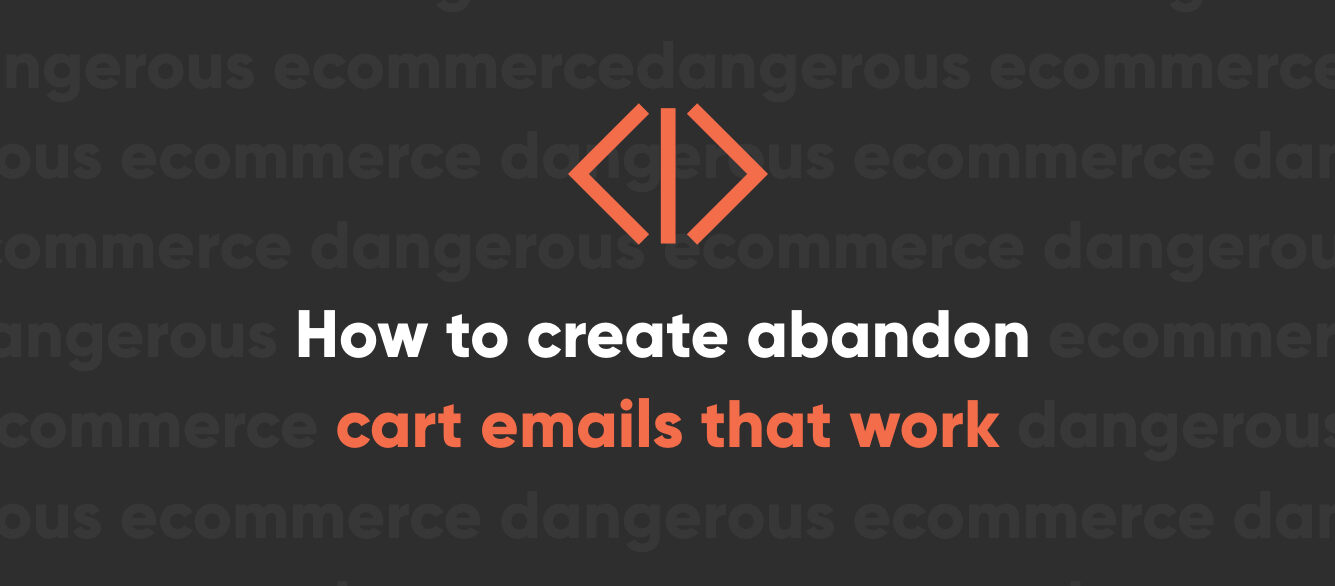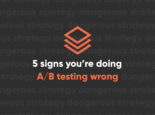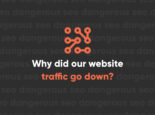
How to Create Abandoned Cart Emails that Work

If you have an ecommerce website, you know how important it is to stay in front of your customers. You also know that many of your visitors add items to the cart without purchasing them.
Because you are a savvy business owner, you are aware of the importance of abandoned cart emails. It’s a pretty simple process. If someone leaves items behind in their cart, you send a reminder email. That person reads the email, returns to your store, buys the product.
Except it doesn’t always quite work that way, does it? If you’re lucky, maybe 50% of those abandoned cart emails are opened. Of those, maybe 25% of those shoppers come back to your store. And maybe 10% of them make a purchase. There has to be a way to do it better, right?
About two-thirds of all online shopping carts are abandoned. The need for abandoned cart emails is obvious, but making these emails actually work for your business takes a bit of skill. Here’s how to create abandoned cart emails that lead to sales.
Give Customers a Reason to Open the Email
A successful abandoned cart email starts with the subject line. This should be pretty obvious. After all, if the customer doesn’t open the email, there isn’t going to be a sale. Inboxes these days are pretty crowded with spam, unread messages, and other abandoned cart emails from stores just like yours. This means you have to give your customers a pretty compelling reason to open your email.
There are two basic pieces to this. The first is making it clear who sent the email. Be sure your store name appears in the "From" field. Your potential customers should immediately recognize your name because they were recently at your store. If you hide your identity, no one is going to open your email.
On to the subject line. This is the bigger piece, but it really isn’t as tricky as some people try to make it. You don’t have to go out of your way to write some super clever or creative subject. A simple and straightforward message often works the best. Here are some quick examples:
- You Forgot Something in Your Cart
- Come Back and Finish Your Purchase
- Complete Your Purchase Now and Save
These are some basic suggestions that might work, but of course you’ll want to do some testing. Depending on your industry and the types of customers you have, you might be able to get more creative. Just make sure your subject line doesn’t seem spammy. You don’t want to end up getting trapped in the spam folder. And don’t try this click-baity subject line: "A Customer Left Some Items in His Cart and You Won’t Believe What Happened Next!"
The bottom line here is that you want your customers to open the email. But that’s just the beginning of the battle to restore that abandoned cart.
Make It Obvious Why You’re Sending the Email
The content of your email shouldn’t be sneaky. You already got the customer to open the email with a simple and straightforward subject line. Keep the interior message consistent and brief. Again, you want to make it obvious who the email is from. This can be as simple as using a header with your brand logo. A good abandoned cart email will contain the products that were left in the cart as well as instructions on how to complete the purchase (usually with a convenient "Complete My Purchase" button). Throw in a little message about how the customer is important to you. Show the customer you are there to help. Messages like "We noticed you left something in your cart" or "Do you need help checking out?" can demonstrate how much you care about the customer’s purchase. Don’t beat around the bush though. You are sending the email because they showed an intent to buy something, and you want them to buy it.
Give Them a Reason to Come Back
The most successful abandoned cart emails are the ones that make customers want to come back and make a purchase. One of the best ways to do this is with a coupon code. Offer your customers a discount if they come back and complete the purchase. Many seasoned online shoppers will intentionally abandon carts with the hope that they will get a coupon code later. Not giving them a coupon in some cases might reduce your chance of making the sale.
Depending on your circumstances, you may not be able to offer a coupon code. Or maybe you don’t need to. But you have to offer some type of unique value. Simply saying "Yo, you didn’t buy this yet" isn’t going to trigger too many purchases. Your customers are only going to come back if they feel like this is a good purchase. There are several ways to do this, including:
- Remind them about your free shipping deals
- Emphasize your amazing customer satisfaction rating
- Tell them about your flexible return policy or product guarantees
- Include star-ratings of the products left behind in the cart
Remember, it’s all about getting them back to the store, but keep it honest. False promises will lead to more abandoned carts, lots of returns, and bad reviews.
Reach Customers at the Right Time
When it comes to abandoned cart emails, timing is everything. Okay, maybe not everything, but it’s pretty important. If you send the abandoned cart email too early, you might seem desperate for the business. If it comes too late, your customer has probably already made the purchase elsewhere or completely lost interest in the item. You have to time the delivery just right.
We’ve tested a lot of different timing for abandoned cart emails. While it depends a bit on the industry, the two-hour abandoned cart email has proven very successful. Call it striking while the iron is hot. Most online shoppers don’t make a purchase right away. They do a little comparison shopping or research, throwing some items in various carts along the way. Maybe they are shopping during their lunch break and don’t have time to make the purchase. You want to send out that abandoned cart reminder before they forget about the potential purchase and before your competitors beat you to it. So why not send it immediately? Well, that can be a little creepy. Plus, you might end up sending out the email while your customer was just taking a little break.
Sending a second email between 24 and 48 hours after the cart was abandoned also has a good success rate. Oftentimes, we’ll skip the coupon code in the 2-hour email and save it for the second email. Call it pulling out the big guns. If our first reminder to complete the purchase didn’t convince the customer, we’ll go ahead and sweeten the deal. In general, two emails is enough. If they haven’t made the purchase after two reminders, they probably aren’t going to make it. You don’t have much to gain by being that annoying.
Don’t Forget a Professional Design
Even if you do everything else right, a poorly designed email can keep your customers from coming back to your site. It’s essential to send transactional emails that look professional and keep consistent with your overall image. A bad design will cause people not to trust your store.
Abandoned cart emails are a great way to drive customers back to your website and increase your overall sales. However, if you want them to work, you have to put in the time and effort to do it the right way. Don’t just slop something together and send it out. Use compelling copy, professional design, and best practices before scheduling your first emails.

Nate Tower
Nate Tower is the President of Perrill and has over 12 years of marketing and sales experience. During his career in digital marketing, Nate has demonstrated exceptional skills in strategic planning, creative ideation and execution. Nate's academic background includes a B.A. with a double major in English Language and Literature, Secondary Education, and a minor in Creative Writing from Washington University. He further expanded his expertise by completing the MBA Essentials program at Carlson Executive Education, University of Minnesota.
Nate holds multiple certifications from HubSpot and Google including Sales Hub Enterprise Implementation, Google Analytics for Power Users and Google Analytics 4. His unique blend of creative and analytical skills positions him as a leader in both the marketing and creative worlds. This, coupled with his passion for learning and educating, lends him the ability to make the complex accessible and the perplexing clear.



